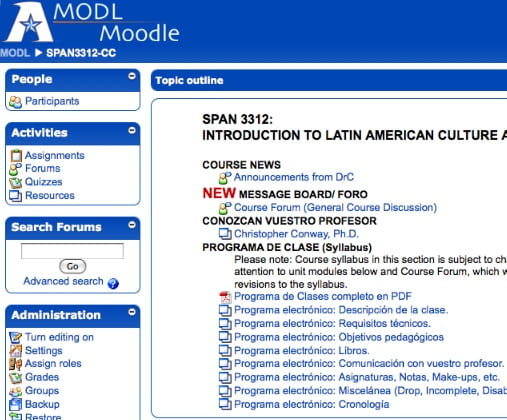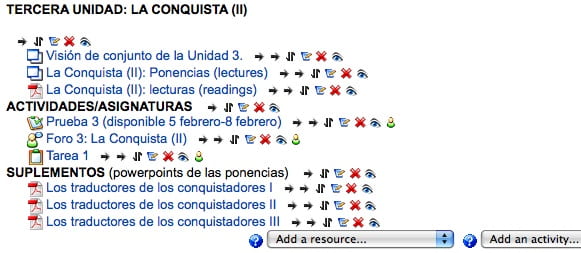 How do you “cover” 800 years of thought, writing, and history in medieval and early modern Europe in a fifteen-week course, and create an environment in which students will take away some breadth and depth, that will have a long-term effect on them? How do you use a wonderful new book of essays (56 in the medieval and early modern period!) by individual scholars who situate Latin and German language texts of the times in those times, so that readers understand why those texts were written, especially when that book presumes much more background knowledge (e.g. St. Boniface in Fulda, Charlemagne at Aachen, goliad poetry), scholarly English proficiency (e.g. vocabulary like ‘peregrinations’), and literary terms (e.g. “alliterative verse”) than many undergraduate students already possess? How do you help students deal with 56 difficult essays in fifteen weeks?
How do you “cover” 800 years of thought, writing, and history in medieval and early modern Europe in a fifteen-week course, and create an environment in which students will take away some breadth and depth, that will have a long-term effect on them? How do you use a wonderful new book of essays (56 in the medieval and early modern period!) by individual scholars who situate Latin and German language texts of the times in those times, so that readers understand why those texts were written, especially when that book presumes much more background knowledge (e.g. St. Boniface in Fulda, Charlemagne at Aachen, goliad poetry), scholarly English proficiency (e.g. vocabulary like ‘peregrinations’), and literary terms (e.g. “alliterative verse”) than many undergraduate students already possess? How do you help students deal with 56 difficult essays in fifteen weeks?
The above is only the tip of the iceberg of goals I had for a literature-in-translation course titled Medieval and Early Modern German Studies, a course conceived as part of the new UT Arlington minor in Medieval and Early Modern Studies. I wanted students to have as complete an experience as possible, of that world, through experiencing the sights and sounds, the spaces of the times, the manuscripts and books themselves, and the authors/people. I wanted them to walk back in time and space, intellectually, sensually (especially through visual images), and even emotionally. I wanted them to read excerpts of the texts that were written in the Latin and German dialects of the time, even if in English translation, and I wanted them to experience the parchment and the illustrations, the handwritten letters and words – the texts themselves. I wanted their understanding to be an amalgam of thought, intellectual endeavor, of seeing and hearing, and of virtually “being” in ninth century Aachen or sixteenth century Wittenberg. In addition, I wanted them to practice writing and various modes of thinking: description, evaluation, speculation, comparison/contrast, and creativity. I wanted them to relate the thought and texts of the times to their own world, and to see if those texts were reverberating in their own time and space. Through all of this I wanted students to demonstrate an understanding for the times that they hadn’t before.
Finally, I wanted students pro-active in their learning: free to choose and follow their interests, within the parameters of the course, motivated, involved, engaged – learning actively.
What was it that allowed all of the above to happen? There was only one way in which the above could occur, and that was through an online tool: the wiki, a space where students could write and share ideas, links, and images, and other students could read that writing, It was also a space to bring back links to the web, which became a virtual reality of experiencing medieval and early modern Europe in text, video, and visual.
I took a “divide-and-conquer” approach. The seventeen students in the course chose three of the 56 essays each. They were to become the “experts” on those essays. They were to provide the missing context and background information, explain the ideas and teach their fellow students through their own writing what they “as the expert” now understood. They were to do this by going out on the web to find explanations, pictures, video of current practices regarding the texts (for example, there are medieval metal rock bands who currently sing the Merseburg charms from the ninth century on youtube). This was the depth portion of the course, the thinking, experiencing, and writing portion. Of course, these endeavors also led to great opportunities to educate students to “critically read” the web.
Then, each time they all wrote about an essay in the textbook, they were to read all essays by all seventeen other students and choose ten which they would think about further. This was the breadth portion of the course. They were to read the student wikis, click on the links, and look at the pictures and videos that their fellow students had brought back as links or copyright-free images.
But students won’t always do this. So they were asked to take those ten student writings and use them to create a story – an imaginary family history story, in which they told the tales of their imaginary ancestors and the ways in which those ancestors were or were not affected by the thought, texts, or authors during the times in which they lived.
The course was a success, and all of the course goals were accomplished to greater and lesser degrees. There was texturing, layering, breadth, depth, and understanding, as well as knowing there was so much more out there that they didn’t understand. Students did as well in this course as in others: some were outstanding, others very good, some good, and some mediocre and not good – as in other courses. But what was different was the experience: a cross between “being there” and the intellectual endeavor of the academy, an experience that I think (and hope) may last a lifetime.
One student, in a process piece, summed up what I had hoped would be the effect of the course, and I quote him here:
“This class is completely unlike any class I have taken here. It is what I consider true education to be at this level…a discourse between professor and students, as well as between oneself and the other students. I felt like my education was in my hands and I loved it. …
I suppose that says it all, and the wiki helped it happened. (Sample wikis are available at https://wiki.uta.edu/display/~rings/1027%2C+August.+Monastic+Scriptoria and https://wiki.uta.edu/pages/viewpage.action?pageId=39690153. Simply log in at wiki.uta.edu and paste in these URLs.)




 Here are some of my ideas I am doing. I teach LIST courses (Literacy studies) in the College of Education and Health Professions. I am a second year professor. Here is my webpage:
Here are some of my ideas I am doing. I teach LIST courses (Literacy studies) in the College of Education and Health Professions. I am a second year professor. Here is my webpage: